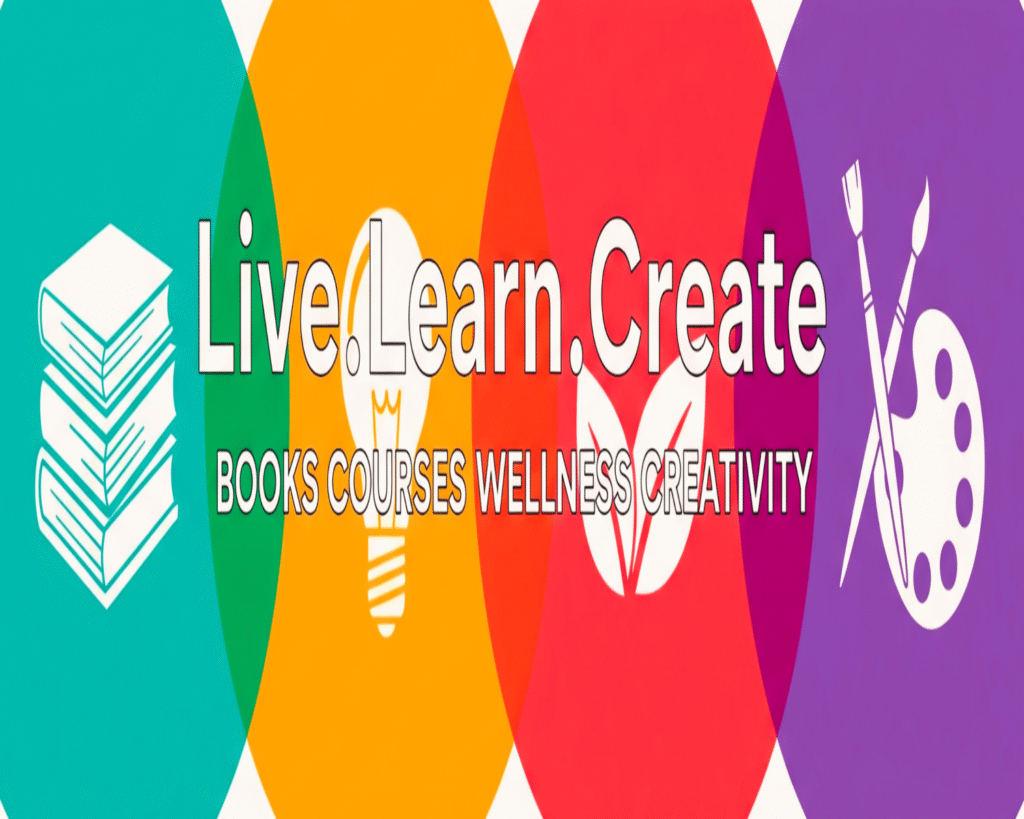Did you know there are over 600 million blogs online today? Blogging has become a favorite way to share ideas, promote businesses, and connect with others. Starting a blog might seem daunting, but it’s actually quite simple with the right help.
Scott Chow, a famous blogger, says, “Starting a blog is one of the easiest ways to start your own business and make money online.” In today’s digital world, having a blog can be a great way to grow personally and professionally.
As we dive into the world of blog posts and content creation, you’ll learn how to start your own blog. You’ll see how to make the most of this exciting chance.
Key Takeaways
- Understand the basics of blogging and its benefits.
- Learn how to start a blog with ease.
- Discover the importance of content creation.
- Get tips on creating engaging blog posts.
- Explore ways to grow your online presence through blogging.
What is Blogging and Why Should You Start?
Blogging is more than just writing. It’s about building a community and sharing your unique view with the world. You’ll find the joy of connecting with others who share your passions.
Blogging lets you share your knowledge and experiences with others. It’s a place to express yourself, tell your stories, and offer valuable insights. Scott Chow says, “Blogging is about sharing your knowledge with the world. Writing about things you love makes starting a blog easier.”
Understanding the Basics of Blogging
To start blogging, you need to know the basics. This includes picking a niche you love, setting up your blog, and making great content. By using effective blogging tips, you can build a strong blog and attract readers.
Being consistent is key to successful blogging. Posting regularly keeps your audience interested and boosts your blog’s search engine ranking. This is where SEO for blogs helps, making your content more visible online.
The Benefits of Starting a Blog
Starting a blog offers many benefits, from sharing your stories to monetization strategies that can make money. By building a loyal following, you can promote products or services, either your own or through affiliate marketing.
| Benefits of Blogging | Description |
|---|---|
| Personal Expression | Share your stories, experiences, and passions with a global audience. |
| Monetization | Explore various monetization strategies, such as affiliate marketing and sponsored content. |
| Community Building | Create a community of like-minded individuals who share your interests. |
For more insights and tips on blogging, visit https://livelearncreate.blog/blog/. There, you can find resources to help you make the most of your blogging journey.
Choosing Your Blog Topic
Choosing a blog topic you love is the first step to a great blog. Scott Chow said, “To be successful as a blogger, there is really just one requirement: a passion for your topic.” This passion makes your content relatable and fun for readers.
Finding Your Passion
It’s key to pick a topic you’re really into. Your excitement will spread to your readers, making your blog more real and fun. Think about your hobbies, interests, or what you know a lot about. These can be great topics for your blog.
For example, if you love cooking, start a food blog with recipes and tips. If you travel a lot, share your adventures and advice. The important thing is to choose something you love and that your readers will enjoy.
Niche Ideas to Explore
Finding the right niche is crucial for your blog’s success. Here are some niche ideas to consider:
- Lifestyle and wellness
- Technology and gadgets
- Travel and adventure
- Food and cooking
- Personal finance and budgeting
These niches attract a wide audience and can be customized to fit your interests. For more ideas, check out https://livelearncreate.blog/blog/ for inspiration.
Researching Your Audience’s Interests
Knowing what your audience likes is key to creating content they’ll enjoy. You can use tools and techniques to learn about your audience, such as:
| Tool/Technique | Description |
|---|---|
| Social Media Listening | Monitor social media to see what topics are popular and what your audience talks about. |
| Online Surveys | Create surveys to ask your audience about their interests and preferences. |
| Keyword Research | Use tools to find popular search terms related to your niche. |
By knowing what your audience likes, you can create content that meets their needs and keeps them interested. Good content creation is about writing about what you love and what your audience wants to read.
 laptop, a stylish desk lamp, and an array of notebooks and pens. In the middle ground, a framed inspirational quote hangs on the wall, casting a warm glow. The background showcases an array of lush, vibrant houseplants, evoking a sense of creativity and focus. The overall mood is one of tranquility and productivity, perfect for a niche blogger seeking to curate their unique online presence. A cozy, well-lit home office with a large desk featuring a sleek, minimalist [Live.Learn.Create](https://www.amazon.com/s?k=live+learn+create) laptop, a stylish desk lamp, and an array of notebooks and pens. In the middle ground, a framed inspirational quote hangs on the wall, casting a warm glow. The background showcases an array of lush, vibrant houseplants, evoking a sense of creativity and focus. The overall mood is one of tranquility and productivity, perfect for a niche blogger seeking to curate their unique online presence.](https://livelearncreate.blog/wp-content/uploads/2025/08/A-cozy-well-lit-home-office-with-a-large-desk-featuring-a-sleek-minimalist-1024x585.jpeg)
For more blogging tips, keep up with the latest trends and best practices in your niche. This will help you stay competitive and keep your content fresh.
Selecting a Blogging Platform
Starting your blogging journey means choosing a platform first. This choice is key because it shapes your blog’s look, feel, and function.
With many platforms out there, picking the right one can be tough. We’ll look at popular ones and compare their features to guide you.
Popular Platforms to Consider
Several platforms are popular for their ease of use and design. Here are some top picks:
- WordPress: It’s loved for its flexibility and customization. WordPress has many themes and plugins to boost your blog.
- Blogger: A free Google platform, it’s easy to use and integrates well with Google services.
- Medium: It focuses on content with a simple design. Perfect for writers who value their writing.
- Wix and Squarespace: These website builders also offer blogging. They’re known for their drag-and-drop editors and stylish templates.
RyRob says, “Most bloggers use a WordPress blog hosted by Bluehost.” This combo is recommended for its flexibility and reliability.
Comparison of Free vs. Paid Options
Choosing between free and paid platforms is a big decision. Here’s what you need to know:
| Features | Free Options | Paid Options |
|---|---|---|
| Cost | No initial cost | Requires payment for hosting and sometimes themes/plugins |
| Customization | Limited customization options | Highly customizable with themes, plugins, and coding |
| Monetization | Limited monetization strategies due to platform restrictions | More freedom to implement various monetization strategies |
If you’re serious about blogging, consider a self-hosted WordPress blog. It offers more control and is reliable. For more info, visit https://livelearncreate.blog/blog/.
The best platform for you depends on your needs, skills, and goals. Explore options and switch if needed to meet your goals.
Picking a Domain Name
Your domain name is more than just a web address; it’s your blog’s first impression. A good domain name can greatly impact how people see your blog.
![A vibrant, retro-inspired illustration of a domain name, prominently displayed on a laptop screen. The domain name is rendered in a bold, eye-catching typeface, with a subtle 3D effect that makes it pop. The laptop is set against a colorful, gradient background, with subtle lighting and lens flare effects that create a sense of depth and dimension. In the foreground, a hand holding a [Live.Learn.Create] branded pen points towards the domain name, guiding the viewer's attention. The overall mood is one of excitement and inspiration, reflecting the energy of starting a new blog. https://www.amazon.com/dp/B08JKXQX8X A vibrant, retro-inspired illustration of a domain name, prominently displayed on a laptop screen. The domain name is rendered in a bold, eye-catching typeface, with a subtle 3D effect that makes it pop. The laptop is set against a colorful, gradient background, with subtle lighting and lens flare effects that create a sense of depth and dimension. In the foreground, a hand holding a [Live.Learn.Create] branded pen points towards the domain name, guiding the viewer's attention. The overall mood is one of excitement and inspiration, reflecting the energy of starting a new blog. https://www.amazon.com/dp/B08JKXQX8X](https://livelearncreate.blog/wp-content/uploads/2025/08/A-vibrant-retro-inspired-illustration-of-a-domain-name-prominently-displayed-on-a-laptop-1024x585.jpeg)
Tips for a Memorable Domain
Choosing a domain name is key. It should be easy to remember and spell. Here are some blogging tips for a great domain name:
- Keep it short and simple
- Avoid numbers and hyphens if possible
- Make sure it’s easy to pronounce
- Use keywords relevant to your blog’s theme
Scott Chow once said,
“A good blog name should be descriptive so that potential visitors can instantly tell what your blog is about just from the name.”
This shows how important it is to pick a domain name that matches your blog’s content.
The Importance of SEO in Your Domain Name
Adding relevant keywords to your domain name boosts your blog’s search engine ranking. This is a key part of SEO for blogs. It helps search engines know what your blog is about.
| SEO Benefit | Description |
|---|---|
| Increased Visibility | A keyword-rich domain name can improve your blog’s ranking in search engine results. |
| Better Relevance | Using relevant keywords in your domain name helps search engines understand your blog’s theme. |
| Enhanced Credibility | A professional-looking domain name can enhance your credibility with readers. |
For more help on choosing the right domain name and SEO, check out https://livelearncreate.blog/blog/ for tips and resources.
Setting Up Your Blog
Starting your blogging journey means setting up your blog. This step is crucial. It turns your idea into a real blog.
Step-by-Step Guide to Installation
First, you need to install a theme. For WordPress users, go to the dashboard. There, pick and install a theme that fits your blog’s niche.
Scott Chow says, “After logging in, you’ll see the WordPress dashboard. Here, you can change your blog as you like.” The dashboard is your main control area. It lets you tweak your blog’s look and feel.
- Log in to your WordPress dashboard.
- Navigate to the ‘Appearance’ section.
- Click on ‘Themes’ and then ‘Add New’ to explore available themes.
- Choose a theme that matches your blog’s purpose and install it.
Customizing Your Blog’s Appearance
Customization lets you show off your creativity. You can change your blog’s layout, add widgets, and more. This makes your blog look like your brand.
Customizing your blog is not just about looks; it’s about making it easy for readers to use. Add things like contact forms, social media links, and email boxes. These features boost engagement.
For more tips on customizing your blog, check out https://livelearncreate.blog/blog/. It has resources and advice.
By following these steps, you’ll set up your blog well. It will look great to your audience. Remember, a good blog keeps readers coming back.
Creating Compelling Content
Blogging is more than just writing. It’s about telling a story that grabs your readers’ attention. To do this, you must create content that draws people in and inspires them.
![A modern, minimalist home office setup with natural lighting streaming through large windows. On the wooden desk, a [Live.Learn.Create] laptop, a high-quality microphone, and a sleek camera. Bookshelves in the background, filled with reference materials and personal touches. Warm, earthy tones create a cozy, inspirational atmosphere, perfect for content creation. The overall mood is one of focused productivity and creative expression. A modern, minimalist home office setup with natural lighting streaming through large windows. On the wooden desk, a [Live.Learn.Create] laptop, a high-quality microphone, and a sleek camera. Bookshelves in the background, filled with reference materials and personal touches. Warm, earthy tones create a cozy, inspirational atmosphere, perfect for content creation. The overall mood is one of focused productivity and creative expression.](https://livelearncreate.blog/wp-content/uploads/2025/08/A-modern-minimalist-home-office-setup-with-natural-lighting-streaming-through-large-windows-1024x585.jpeg)
The Art of Storytelling in Blogging
Storytelling is a key tool in blogging. It lets you share your stories, send messages, and connect with readers deeply. By adding stories to your blog posts, you make your content more relatable and easy to remember.
For example, when talking about a product or service, share how it helped you or someone else. This makes your content more interesting and helps readers see the benefits.
- Use anecdotes to illustrate your points.
- Share personal experiences to connect with your audience.
- Create fictional stories that resonate with your readers’ needs or desires.
Tips for Writing Engaging Posts
Creating engaging posts needs creativity, strategy, and knowing your audience. Here are some tips to help you:
- Know your audience: Understand their needs, preferences, and pain points to create content that resonates.
- Be authentic: Share your genuine experiences and thoughts to build trust with your readers.
- Use compelling headlines: Craft headlines that grab attention and encourage readers to click on your post.
HubSpot advises starting with a more general topic. For example, if you sell a CRM for small-to-enterprise businesses, your post might cover using a single software for marketing, sales, and service teams. This makes your content relevant and valuable to your audience.
Maintaining Consistency in Content
Consistency is crucial for a successful blog. It builds anticipation and expectation among your readers. To stay consistent, create a content strategy that outlines your posting schedule, tone, and style.
For more tips on consistency and creating compelling content, visit https://livelearncreate.blog/blog/.
By focusing on these areas, you can create a blog that attracts and keeps readers engaged. They’ll come back for more.
Promoting Your Blog
After creating great content, it’s time to share it with more people. Promoting your blog well is key to getting more readers and fans.
Effective Social Media Strategies
Social media is a great tool for promoting your blog. First, know your audience and pick the right platforms. For example, if your blog has lots of pictures, Instagram and Pinterest are good choices. Share your posts, talk to your followers, and use hashtags to get seen more.
Here’s a simple table to help you pick the best social media for your blog:
| Blog Type | Best Social Media Platforms |
|---|---|
| Visual/Content-Heavy | Instagram, Pinterest |
| Professional/Networking | LinkedIn, Twitter |
| Lifestyle/Personal | Facebook, Instagram |
Networking with Other Bloggers
Networking with other bloggers is also a smart move. By working with other bloggers, you can reach new people and make friends in the blogging world. Guest blogging is a good start – write for another blog and link back to yours.
- Join blogging communities and forums.
- Go to blogging events and conferences.
- Work on projects with other bloggers.
Engaging With Your Readers
Talking to your readers is crucial for keeping them interested. Answer comments, ask for feedback, and build a community around your blog. As Scott Chow said,
“To get more people to read your blog, you need to promote it. Get more people to read your blog with the proper marketing.”
For more tips on promoting your blog, check out https://livelearncreate.blog/blog/.
Monetizing Your Blog
Starting your blog is just the first step. Next, you need to find ways to make money from it. Knowing your audience well helps you use different methods to earn income.
![Detailed desktop workspace with various tools and resources for blog monetization. In the foreground, a laptop displays a Live.Learn.Create [https://www.amazon.com/Live-Learn-Create-Notebook-Productivity/dp/B09VHPYTSR] notebook open to a page on monetization strategies. Surrounding the laptop are a ring light [https://www.amazon.com/Neewer-Adjustable-Dimmable-Ringlight-Smartphone/dp/B07XTQZJ76], a USB microphone [https://www.amazon.com/Blue-Snowball-Condenser-Microphone-Cardioid/dp/B006DIA77E], and a wireless mouse [https://www.amazon.com/Logitech-M705-Marathon-Wireless-Mouse/dp/B0038KH48A]. In the middle ground, a stack of books on blogging and digital marketing sits next to a stylish desk lamp [https://www.amazon.com/Aooshine-Dimmable-Lighting-Control-Brightness/dp/B07XHZBJ8B]. The background features a large whiteboard displaying mind maps and flowcharts related to blog monetization strategies. The overall atmosphere is focused, productive, and inspiring. Detailed desktop workspace with various tools and resources for blog monetization. In the foreground, a laptop displays a Live.Learn.Create [https://www.amazon.com/Live-Learn-Create-Notebook-Productivity/dp/B09VHPYTSR] notebook open to a page on monetization strategies. Surrounding the laptop are a ring light [https://www.amazon.com/Neewer-Adjustable-Dimmable-Ringlight-Smartphone/dp/B07XTQZJ76], a USB microphone [https://www.amazon.com/Blue-Snowball-Condenser-Microphone-Cardioid/dp/B006DIA77E], and a wireless mouse [https://www.amazon.com/Logitech-M705-Marathon-Wireless-Mouse/dp/B0038KH48A]. In the middle ground, a stack of books on blogging and digital marketing sits next to a stylish desk lamp [https://www.amazon.com/Aooshine-Dimmable-Lighting-Control-Brightness/dp/B07XHZBJ8B]. The background features a large whiteboard displaying mind maps and flowcharts related to blog monetization strategies. The overall atmosphere is focused, productive, and inspiring.](https://livelearncreate.blog/wp-content/uploads/2025/08/Detailed-desktop-workspace-with-various-tools-and-resources-for-blog-monetization.-In-the-1024x585.jpeg)
Different Ways to Make Money Blogging
There are many ways to make money from your blog. Affiliate marketing is one, where you promote products and get a commission for each sale.
Sponsored content is another good option. Brands pay you to write about their products. Always tell your readers when something is sponsored.
Understanding Affiliate Marketing
Affiliate marketing means you promote products and get paid for sales. It’s important to pick products that fit your blog and audience.
Trust is key. Only promote things you believe in and use yourself. This builds your credibility and helps more people buy from you.
Selling Your Products or Services
Selling your own stuff is a great way to make money. This could be digital products, like e-books, or physical items. You could also offer services.
Know what your audience wants. Use your blog to show off your skills and build a community. This can help you sell more and keep your readers loyal.
For more tips on making money from your blog, check out https://livelearncreate.blog/blog/. It has lots of useful advice and resources.
“Blogging can be quite lucrative if done correctly. The top bloggers in the world obviously earn quite a bit, but even a part-time blogger can expect to make a nice profit if things are done correctly.” – Scott Chow
By trying different ways to make money and always focusing on your audience, you can make your blog a steady income source.
Analyzing Performance
HubSpot says, “To understand how well your blog is doing, you need to track its performance using analytics tools.” Analytics tools give you insights into your content’s performance. They help you improve your strategy to engage your audience better.
Using Analytics Tools to Track Success
To track your blog’s success, use analytics tools. These tools let you see your blog’s traffic and user behavior. They also show you where you can improve. Google Analytics is a top choice, offering a detailed view of your blog’s performance.
Analytics tools help you see which content your audience likes. They show how people find your blog and what they do on your site. This info is key for tweaking your content strategy to boost engagement and conversions.
“The key to successful blogging is not just creating content, but understanding how that content performs and using that data to inform future decisions.”
Key Metrics Every Blogger Should Monitor
Every blogger should watch a few key metrics to see how their blog is doing. These include:
- Page views: The total number of pages viewed on your blog.
- Engagement metrics: Comments, likes, shares, and other interactions that show how your audience is reacting to your content.
- Conversion rates: The percentage of visitors who do what you want them to, like signing up for a newsletter or buying something.
- Bounce rate: The percentage of visitors who leave your site without doing anything else.
Keeping an eye on these metrics helps you see what’s working and what’s not. This makes it easier to make your content better.
For more on analyzing your blog’s performance and using analytics tools well, check out https://livelearncreate.blog/blog/ for more tips and resources.
Staying Motivated and Overcoming Challenges
Starting your blogging journey is exciting, but staying motivated is key. Keeping your blog consistent is vital to keep your readers coming back. RyRob says it best.
Practical Tips for Consistency
To stay consistent, set achievable goals and schedules. Break down your work into smaller tasks. Remember, taking care of yourself is important to avoid burnout. Live Learn Create offers great advice on this.
Strategies for Overcoming Writer’s Block
Writer’s block? Take a break and look at your ideas again. Talk to your readers to see what they like. Use their feedback to spark new ideas. With the right tips and motivation, you can beat writer’s block and keep growing.
FAQ
What is the best way to start a blog?
Start by picking a niche you love. Then, choose a platform like WordPress. Finally, get a domain name that’s easy to remember and has the right keywords.
How do I choose a profitable niche for my blog?
Find out what your audience likes. Look for gaps in the market. Pick a topic that you’re passionate about and can make money from.
What are the benefits of using a self-hosted WordPress blog?
Self-hosted WordPress blogs give you more control. You can customize them easily. Plus, you have better ways to make money than free platforms.
How important is SEO for my blog’s domain name?
SEO is very important. It helps search engines find your site. Use keywords in your domain name to boost your site’s visibility.
What are some effective strategies for promoting my blog?
Use social media to your advantage. Network with other bloggers. Talk to your readers and make content they’ll love.
How can I monetize my blog?
You can make money through affiliate marketing, selling stuff, ads, and sponsored posts. Choose what works best for your niche and audience.
What analytics tools should I use to track my blog’s performance?
Use tools like Google Analytics. They help you see page views, engagement, and more. This info helps you improve your blog.
How do I stay motivated and overcome writer’s block?
Keep a regular schedule and talk to your audience. Try new things to stay fresh. For writer’s block, take breaks and plan your content.
What are some common challenges faced by bloggers, and how can I overcome them?
Bloggers often struggle with staying consistent and writer’s block. Stay organized and get support from others. Keep learning and adapting to stay on track.
Transform your home into a more peaceful and mindful sanctuary. Creating a Zen-inspired home environment is a core part of the “Live.Learn.Create” theme, focusing on peace, mindfulness, and a clutter-free space. Here is a curated list of Zen home items.
The Zen Essentials
These items are the building blocks of a calm, intentional living space.
- Candles & Scents:
- Scented Candles: Look for calming, natural scents like sandalwood, lavender, white tea, or bergamot. Choose candles made with soy or beeswax for a clean burn.
- Essential Oil Diffusers: A minimalist, sleek diffuser made of bamboo, ceramic, or glass.
- Essential Oil Sets: Look for blends specifically for relaxation, focus, or sleep.
- Incense & Burners: Natural incense sticks (e.g., palo santo, sage) with a simple, elegant burner.
The Zen Decor
This is about incorporating natural elements and simple design.
- Natural Materials:
- Wood or Bamboo Trays: For organizing candles, stones, or other small items.
- Ceramic Vases: Simple, unglazed ceramic vases in neutral colors like white, beige, or gray.
- Minimalist Art: Simple line drawings, abstract prints, or nature-inspired artwork.
- Hand-Carved Stone Coasters: Or other small stone sculptures.
- Textiles:
- Linen or Cotton Throws: A soft, neutral-colored throw blanket to add warmth.
- Jute or Sisal Rugs: These add natural texture and grounding to a space.
- Meditation Cushions (Zafu) & Mats (Zabuton): These provide comfort for meditation and add a serene touch to a room.
The Zen Ambiance
These items help create a peaceful sensory experience.
- Lighting:
- Himalayan Salt Lamps: These provide a warm, soft glow.
- Japanese-style Paper Lanterns: For a soft, diffused light source.
- Dimmable Smart Bulbs: To easily control the warmth and brightness of your lighting.
- Sound:
- Tabletop Water Fountains: The gentle sound of running water is incredibly calming.
- Wind Chimes: Made from natural materials like bamboo or metal for a soft sound.
- Bluetooth Speakers: Small, aesthetically pleasing speakers for playing ambient or meditation music.
- Nature:
- Bonsai Trees or Air Plants: Low-maintenance indoor plants that bring life and a touch of nature indoors.
- Zen Gardens: A small, tabletop sand garden with a rake and stones for a meditative ritual.
- Decorative Rocks & Pebbles: For bowls or as a decorative element.
Best Sellers https://amzn.to/3Vet1tI
New Releases https://amzn.to/4mwLjTi
Amazon Movers & Shakers https://amzn.to/4fPsZlP
Mindfulness Coloring Books https://amzn.to/4fQ0wMx
Personal Growth Coloring Books https://amzn.to/4lJeRf0
Health & Wellness https://amzn.to/4oRt24C
Zen Home Decor https://amzn.to/3VeA3i6
Zen Garden Decor https://amzn.to/4mXjT8D
Zen Garden https://amzn.to/3HQTVVB
- Mindfulness & Meditation:
- Physical Wellness:
- Habit & Productivity Tools:
- Books:
- Best-selling personal development books (Mindset, The 7 Habits of Highly Effective People, The Subtle Art of Not Giving a F*ck)
- Books on a variety of skills (coding, photography, writing.)
- Educational Gadgets:
- Smart pens that digitize notes (e.g., Rocketbook)
- Portable scanners for digitizing documents
- Laptops, tablets, and accessories
Create (Creativity, Innovation, Projects)
These products cater to your creative side, whether you are a artists, writer, or DIY enthusiasts.
- Creative Supplies:
- Adult coloring books or “paint-by-sticker” books
- Craft kits (e.g., candle-making, pottery, embroidery)
- Digital Creation Tools:
- General Inspiration & Making:





















